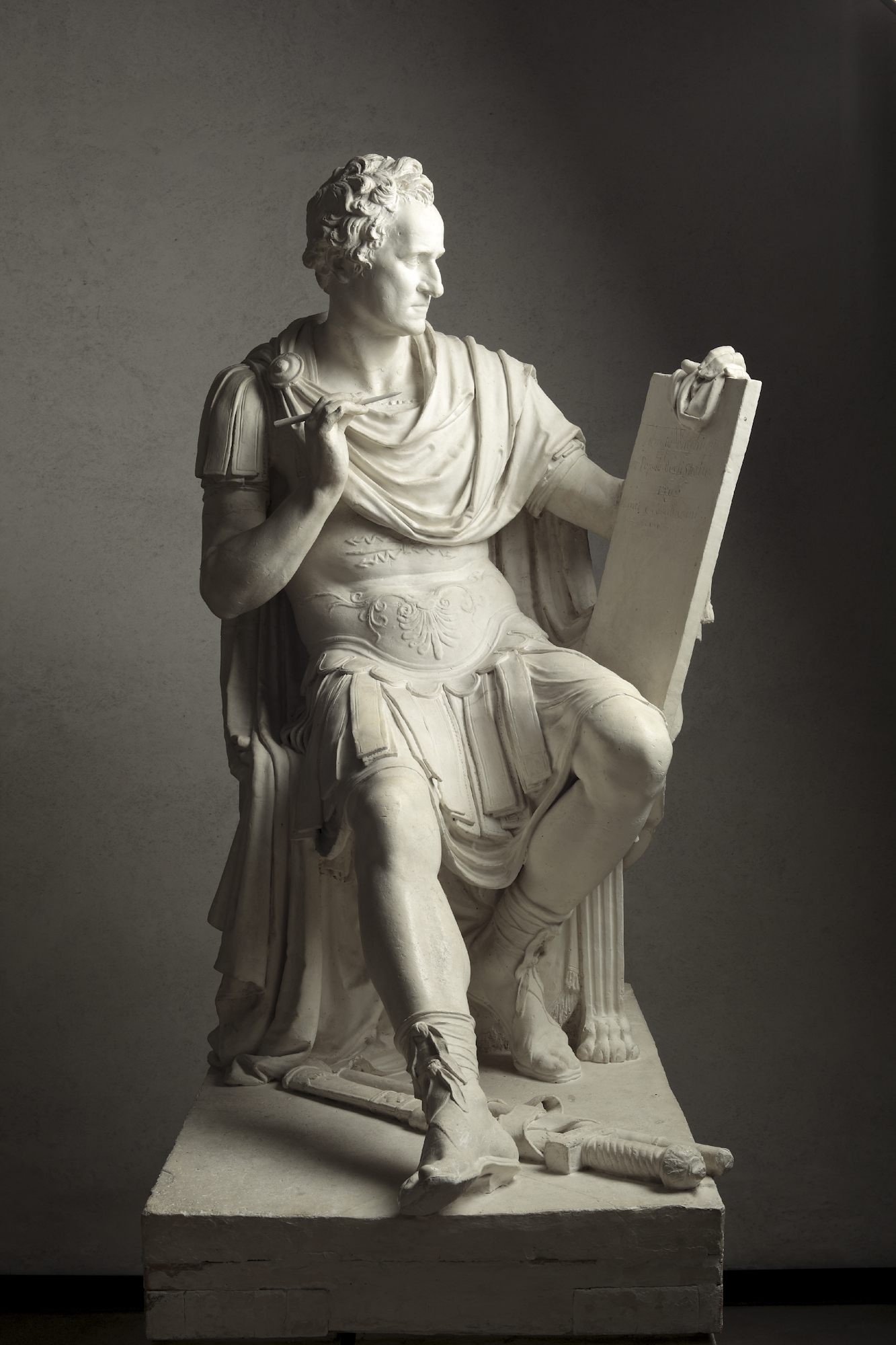
Antonio Canova, George Washington, gesso, 1818, Gypsotheca e Museo Antonio Canova, Possagno – foto Fabio Zonta
NEW YORK CITY — In 1816, the North Carolina State House in Raleigh commissioned a full-length statue of George Washington to stand in the hall of the State Senate. Thomas Jefferson, believing that no American sculptor was up to the task, recommended Antonio Canova (1757–1822), then one of Europe’s most celebrated artists.
The first and only work Canova created for America, the statue depicted the nation’s first president in ancient Roman garb, per Jefferson’s urging, drafting his farewell address to the states. It was unveiled to great acclaim in 1821, and people traveled from far and wide to see it. Tragically, only a decade later, a fire swept through the State House, reducing the statue to just a few charred fragments.
On view in 2018 at the Frick Collection May 22–September 23, the exhibition, “Canova’s George Washington,” examines the history of the artist’s lost masterpiece, probably the least well known of his public monuments. It brings together for the first time Canova’s full-sized preparatory plaster model (which has never left Italy), four preparatory sketches for the sculpture, and related engravings and drawings. The exhibition also includes Thomas Lawrence’s 1816 oil portrait of Canova, which, like the model and several sketches, will be on loan from the Gypsotheca e Museo Antonio Canova in Possagno, Italy, the birthplace of the artist.
The exhibition is organized by Xavier F. Salomon, the Frick Collection’s Peter Jay Sharp Chief Curator, in collaboration with Mario Guderzo, Director of the Gypsotheca e Museo Antonio Canova, the Venice International Foundation, and Friends of Venice Italy Inc. Following its presentation at the Frick, the exhibition will be shown in Italy at the Gypsotheca e Museo Antonio Canova in Possagno in the fall of 2018.
The Frick Collection is at 1 East 70th Street. For more information, www.frick.org or 212-288-0700.




